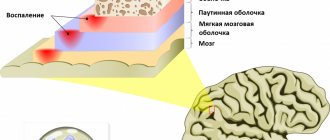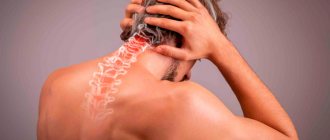Pressing cephalalgia in the temples can occur at any time of the day. This pain is usually of mild or moderate intensity. It does not always indicate the presence of diseases or serious problems, but if it appears systematically, it requires diagnosis. There are many effective ways to deal with unpleasant sensations of a physiological nature. If their use does not give the desired result, you should not resort to taking medications. It is better to visit a neurologist who will determine the causes of the condition and select the necessary treatment regimen. You should not delay your visit to the doctor if there is pressure in your temples and additional alarming symptoms appear.
The mechanism of pain in the temples of any nature
In the temporal areas of the head there is a dense vascular network. Due to the anatomical features of the area, the blood channels are located in close proximity to both the skin and bones of the skull. If for some reason cephalalgia spreads to this area, it is in most cases caused by a circulatory failure, increased blood flow to the tissues, and vasospasm. Even arteritis, in which there is not only pressure in the temples, but also sharp or pulsating sensations, is no exception. It is accompanied by cephalalgia due to irritation of receptors by increased blood pressure.
Nature of pain and additional pathological signs
If a person has pressure in his temples, then in order for the treatment to be effective, it is imperative to determine the cause of the pathology. This takes into account not only the nature of the headache, but also other symptoms.
So, each individual pathology has its own symptoms, although they are not always specific:
- With arterial hypertension, the head is compressed quite strongly. In addition, in this case, other symptoms can be noted: dizziness, pain spreading throughout the entire head, the patient’s ears are blocked, he hears noise. Other neurological signs may also be present. It should be noted that if hypertension is the cause of pain that presses on the head, then you need to consult a neurologist or cardiologist, because a complication of this disease is a stroke.
- If the cause of the headache is atherosclerosis of the cerebral vessels, then in this case the person’s performance decreases, dizziness is noted, the level of anxiety increases, sleep is disturbed, and the level of attention and memory decreases.
- With migraine, unpleasant sensations are most often localized on one side of the head, although in some cases it compresses not only the temple, but the entire head. Any movement or stimulus can worsen the headache. In addition to squeezing the temples, the patient feels nauseous and experiences uncontrollable vomiting, which does not bring relief. If the cause of a severe headache is migraine, then the person also develops vision problems and specific migraine symptoms.
- With severe intoxication of the body, the patient experiences nausea and vomiting, and arterial hypertension is also recorded, which provokes pressure in the temples.
- Pheochromocytoma. This reason is also quite common and is a violation of the kidneys. In this case, it is not pressure that can be felt in the temples, but heaviness and acute pain. In addition, there are other symptoms: pale skin, increased sweating, increased blood pressure.
- Hypotension. The patient has a lot of pressure in the temples, the pathology has a negative effect on the ears (the person’s hearing deteriorates). In addition, he may experience auditory hallucinations.
- With a tension headache, the area of the forehead, back of the head and temples is compressed. In addition to pressure, the patient feels a mild dull pain syndrome. A person may also feel discomfort even while wearing a hat or combing.
- If pathological pressure in the temples occurs as a result of working at a computer, then in addition the person’s vision may deteriorate, the mucous membrane of the eye becomes dry and red. In addition, the pain syndrome also affects the neck area.
- With temporal arteritis, the temple not only presses, the patient feels severe pain in the muscles and joints. He has decreased vision, and the doctor can feel a lump in the temple area. In this case, a neurosurgeon will help.
- If the cause of the headache is neurocirculatory dystonia, then in addition to pressure in the temporal region, a person will experience “floaters” before the eyes and coldness in the extremities. At the same time, there are heart pains that are difficult to eliminate with simple medications. The heart can feel like it’s squeezing. Periodically, the patient's condition worsens.
Read why your left temple hurts.
As you can see, if there is pressure on the temporal part of the head, then additional symptoms that need to be accurately described to the doctor will help determine the causes of this condition.
You can’t diagnose yourself, just like you can’t treat yourself.
Temples hurt - what are the reasons?
The triggers for temporal cephalgia are not necessarily in the head. Pressing sensations can occur at the initial stage of a cold, in case of poisoning with toxic fumes or salts of heavy metals. Often the symptom is not pathological, but physiological in origin.
Factors that cause headaches and noticeable pressure on the temples:
- stress – experiences, emotional overload, shock situations lead to vasospasm, hypoxia of the brain matter. Analgesics will not help here; it is better to use relaxation techniques or natural sedatives;
- physical overload – passion for sports creates excessive stress on the blood vessels. Due to the peculiarities of the anatomy, pressing pain first occurs in the temples. Adjusting your training regimen will relieve discomfort;
- alcohol consumption - even in small volumes, alcoholic drinks become a source of toxins and cause changes in the tone of blood channels. Temporal cephalgia can occur both with alcohol abuse and after a single dose;
- smoking is a factor that causes vascular spasm, causing an increase in blood pressure. Heavy smokers not only experience pressure on their temples, but the pain spreads to the entire cranium. If there is no opportunity or desire to give up the habit, you must at least follow the rules of smoking;
- changes in hormonal levels - unpleasant sensations in the temples often bother women during menopause, menopause, pregnancy, menstruation or before them. They are usually mild and easily treatable using traditional medicine;
- change in climatic conditions - a violent reaction to weather changes often indicates reduced functionality of blood vessels. If treatment is not required, it is worth at least doing general strengthening of the body;
- dietary habits - eating fatty or fried foods threatens vascular atherosclerosis. Excessive consumption of salty foods can lead to hypertension. A passion for processed foods, fast food and preservatives leads to the accumulation of chemical additives in the body, to which the brain reacts with a headache in the temples;
- eye strain – prolonged work at the computer or with papers, reading, looking at small details force the eye muscles to overstrain. The result is a decrease in visual acuity, dryness and redness of the mucous membrane, pressing sensations in the temples;
- non-compliance with the daily routine - temporal cephalgia is one of the first and most striking symptoms of lack of sleep or excess sleep. Correcting your routine will quickly relieve discomfort.
When physiological causes can be excluded, it is worth visiting a therapist. The regular occurrence of a symptom is characteristic of a number of pathological conditions that can pose a threat to health. Do not hesitate to visit a doctor if your headache is accompanied by other warning signs.
Hypertonic disease
With a persistent increase in blood pressure, people can experience cephalalgia constantly or suffer from systematic prolonged attacks.
They have a headache in the temple area, and the sensation often moves to the back of the head. Soreness is represented by pressure or distension, which at its peak turns into pulsation. The clinical picture is complemented by facial redness, irritability, dizziness, loss of coordination, and nausea. The danger of the disease is that it negatively affects the condition of the blood vessels and leads to their wear and tear. Hypertension also puts excessive strain on the heart. If left untreated, the disease can provoke a hypertensive crisis, stroke, and multiple organ failure.
Migraine
Neurological pathology is characterized by unilateral headache in the temples, which gradually spreads to the entire half of the skull. From time to time the symptom may change its localization to the opposite, but rarely becomes symmetrical. At the peak of sensations, the pressure turns into pulsation. It is accompanied by nausea - if vomiting occurs, the patient experiences relief. An attack of cephalgia in a quarter of cases is preceded by an aura in the form of unusual visual, olfactory, and tactile sensations. During physical activity, under the influence of smells, sounds, bright light, the discomfort intensifies.
Cardiopsychoneurosis
The cause of this disease has not yet been fully established. Its development is associated with the specifics of the constitution
person. According to statistics, pathology is detected in young people. It is manifested by cephalalgia, decreased temperature of the extremities, spots before the eyes, a lump in the throat and pain in the chest, which is relieved by Nitroglycerin. The headache is pressing, mainly concentrated in the temples.
Most patients diagnosed experience occasional crises. They are characterized by dizziness, bouts of trembling, inexplicable fear, and increased sweating. Such attacks are resolved by loose stools or copious urine output.
Transitory reasons
This group includes passing factors that cause a one-time occurrence of a symptom. They are usually not dangerous, but can cause discomfort. When systematically exposed to the body, such irritants can provoke the appearance of chronic problems. The list includes abuse of coffee or other stimulants, taking medications, fear, uncomfortable headwear, inappropriate hairstyle, and hypothermia of the head. If you try to endure such pain, then under the influence of negative emotions it will only intensify.
Causes associated with diseases
What disorders and diseases can cause the symptom and feeling of pressure in the temples?
Migraine
Neurological disorder. The exact origin of the pathological process has not yet been fully studied. Therefore, effective methods of etiotropic treatment have not been created.
It is based on a disorder of vascular regulation, as far as is currently known. The symptoms of migraine are specific: pressure in the temples, pain in the head on one side. Although there are known cases of diffuse spread of discomfort.
Photophobia and intolerance to loud sounds are also present. Aura in the form of flickering images before the eyes. The frequency of attacks varies. On average, up to 6-10 times a month. At the same time, each such episode lasts up to several hours or even days.
The treatment is specific. It involves correcting the condition of blood vessels. Antispasmodics and analgesics are prescribed. Also special anti-migraine medications.
Recovery presents certain difficulties. On the one hand, because the causes of the disease are not fully known. On the other hand, due to the resistance of the pathological process itself.
Therefore, the correction may take months until the condition is brought under control.
Some poisonings
Intoxication often causes pressure in the temples. Especially often we are talking about lesions of several types.
- Prolonged inhalation of carbon monoxide can cause severe headaches. Discomfort is accompanied by nausea and vomiting. Hallucinations and other neurological problems are possible.
- Poisoning with cadmium, arsenic, lead, mercury. In this case, pressure in the temples is the least of the problems. Disturbances in the functioning of the central nervous system occur. There is headache, heaviness, weakness, and tissue bleeding. There are breathing problems.
Regardless of the type of poisoning, treatment should begin as quickly as possible. Correction is carried out based on the essence of the pathological process.
A specific antidote is prescribed. Adaptogens and vitamin-mineral complexes are also indicated.
It is important not to delay therapy. Because death is possible. Especially in case of massive poisoning. When there is a lot of active ingredient.
Taking certain medications
The symptom is provoked by a large group of drugs. For example, antiepileptics, non-steroidal anti-inflammatory drugs, glucocorticoids.
The causes of pressure in the temples are an increase in intracranial or blood pressure. The main method of correction is refusal of a specific drug. The one that provokes the violation.
At the same time, it is absolutely impossible to exclude drugs without permission. Problems are possible up to an exacerbation of the underlying pathological process. This is dangerous to health and life.
Therefore, all corrections to the treatment regimen are carried out strictly under the supervision of a specialist.
Hypertonic disease
Chronic cardiac disorder. The basis is an increase in blood pressure.
At the initial stages - unstable. Then - persistent, which does not decrease without special drugs. The reasons are not fully known. There is a high probability that a group of factors is at work.
On the one hand, there are disturbances in central regulation. On the other hand, there are problems with hormonal levels and the concentration of specific substances. For example, renin, angiotensin.
There are situations when the cause of the pathological process is kidney disease. Pyelonephritis, failure and other issues.
The symptoms are quite typical. The temples hurt, there is pressure on the eyes, there is intense discomfort in the head, usually spread throughout the entire skull.
Nausea, vomiting, heaviness, weakness and drowsiness or, conversely, psychomotor agitation are possible.
Therapy is complex and lengthy. Advanced forms of the pathological process require lifelong correction. Several types of drugs are prescribed:
- Beta blockers. Metoprolol and similar.
- Calcium antagonists. They do not allow ions of the substance to penetrate through the vessels quickly enough to provoke a spasm of the arteries.
- ACE inhibitors. The production and action of angiotensin-2 slow down. The same substance that causes a narrowing of large blood supply structures. They are also used for the prevention of stroke and heart attack.
- Sartans. Drugs with similar effects. Increases vascular conductivity and elasticity of arteries and small structures.
- Means with a central effect. Used to quickly relieve attacks of high blood pressure.
There are no special medications for immediate correction of headaches. It is important to lower your blood pressure levels.
For quick recovery, such drugs as Captopril, Moxonidine are suitable. The issue is resolved under the supervision of a cardiologist.
Brain tumors
Neoplastic processes of the central nervous system are dangerous in themselves. Because the space in the skull is limited. Compresses the temples due to compression of brain tissue.
The factors under which the pathological process develops are varied. According to research by specialists, disorders are mainly associated with family history. Negative heredity provokes an increased likelihood of neoplastic disorders.
Risks also increase against the background of radiation damage and the influence of ionizing radiation. The environmental factor also plays a role. The exact origin of the pathology has not yet been fully studied.
Symptoms are quite nonspecific. Symptoms of a brain tumor include:
- Pressure in temples. Intense.
- Painful sensations. Extremely strong in advanced stages. They are not relieved by any drug other than narcotic analgesics.
- Heaviness.
- Nausea.
- Vomit. Sometimes indomitable.
- Hallucinations.
- Focal manifestations. From the part of the brain that is involved in the pathological process.
Treatment is urgent. Under the supervision of a neurosurgeon. Typically, this involves surgically removing the neoplasia. Radiation and chemotherapy are prescribed as needed.
Benign structures are eliminated surgically. Further correction is carried out according to indications. Monitoring the postsurgical condition is possible using MRI of the brain with contrast.
Infectious diseases
Heterogeneous in nature. Caused by three groups of pathogens.
- Bacteria.
- Viruses.
- Fungi.
All of these types of pathological processes are accompanied by intense symptoms.
For example, there are:
- Headache.
- Vertigo. Feeling of the surrounding world spinning before your eyes.
- Impaired coordination of movements.
- Nausea.
- Weakness.
- Increased body temperature.
- Vomit.
- Drowsiness and feeling of exhaustion.
The cause of pressing pain in the temples, as well as other signs of the disorder, is intoxication of the body with waste products of bacteria and the breakdown of its own cells. Hence the pronounced clinical manifestations.
Treatment is carried out based on the essence of the phenomenon. For example, in case of bacterial infection, loading doses of broad-spectrum antibiotics are used. Or narrowly targeted medications.
Viral forms of the disease require mandatory stimulation of the immune system. Introduction of an interferon substance from the outside.
Fungi are eliminated using fungicides. There are plenty of options. Plus, vitamin and mineral complexes are required.
Hormonal disorders
Violations of a specific background. For example, during pregnancy and other conditions, but at the level of pathology.
Therapy depends on the specific abnormality. It is mainly carried out with the help of special replacement drugs. Hormonal drugs of artificial or natural origin. The disorder is especially common in women.
The causes of pressure in the temples are varied and almost always require etiotropic correction. That is, eliminating the very cause of the pathological process.
Diagnostic algorithm
At the initial stage of development of many diseases and with physiological causes of temporal headache, the symptom is often the only alarming sign. Based on this, it is difficult to make a diagnosis and choose the right treatment. After collecting anamnesis, a number of steps should be taken to help determine the source of the problems.
If you experience pain in your temples, it is recommended to do the following:
- measure blood pressure - each person has his own “working pressure” at which he feels comfortable. It is important to understand that indicators exceeding these limits are not considered a disease if they are within the boundaries of medical norms. Attempts to correct normal blood pressure readings using pills can lead to serious problems;
- assess the likelihood of external factors influencing the body;
- pass general tests, undergo diagnostic procedures. The list of the latter is established by the doctor. For pressing sensations in the temples, MRI, CT, ultrasound or REG of blood vessels, and EEG are often used.
Based on the research results, the doctor makes a preliminary diagnosis. If necessary, he refers the patient for examination to a neurologist, ophthalmologist, ENT specialist, psychologist, orthopedist or other specialist. After identifying the causes of the headache, a treatment regimen is selected for the patient.
Features of drug treatment of pathology
If a person has pressure in the temporal part of the head, something needs to be done about it. To begin with, it is worth undergoing a thorough examination, which will include the necessary laboratory tests, radiography, diagnostics of the blood vessels of the brain and cervical spine, MRI or CT. Only after this can specialists prescribe effective treatment.
It is necessary to contact a therapist, neurologist and vertebrologist. The need for consultation with an ENT specialist, cardiologist and other specialists is not excluded.
To treat the pathology, the following medications may be needed:
- Antispasmodics or analgesics: “Analgin”, “Spazmalgon”.
- Anti-inflammatory drugs: Ibuprofen.
- Muscle relaxants (if necessary and provided that other groups of drugs do not help).
- For cervical osteochondrosis, it is necessary to use agents to dilate blood vessels: Aminophylline.
- If a person feels strong tension and heaviness in the temple area, then Indomethacin can be used to eliminate these unpleasant sensations.
- To treat neurocirculatory dystonia, infusions of valerian or motherwort are used. However, they may not always be effective. In this case, Gidazepam and Elenium are used. The drug "Picamilon" is quite gentle but effective.
You may need medications that regulate the functionality of your blood vessels. If a patient is diagnosed with migraine, then conventional medications are not enough. You will need special products and triptans: Tempalgin, Sumamigren, Imigran.
Self-medication in this case is prohibited.
Other treatments
The pills should be used as a last resort, when the head is compressed very strongly and nothing else simply can help. However, in most cases, you can get rid of discomfort using means that will not affect the body as negatively as medications. For example, you can use aromatic oils: lemon, peppermint, grapefruit, lavender, lemon balm. However, you shouldn’t get carried away with these means either. They can be used only 3-4 times a week.
Find out which folk remedy for headaches helps best.
You can use aromatic oils for baths or massages. Physiotherapeutic procedures are considered very useful: ultrasound, laser therapy, magnetic therapy, electrophoresis using medications.
You can eliminate tension headaches by properly organizing your workplace and performing simple physical exercises or gymnastics every hour. Massaging the temples and back of the neck will be very useful.
You can relieve pain with a wet towel. Naturally, all people facing such a problem need proper rest.
We should not forget about traditional medicine. Infusions or decoctions of motherwort, lemon balm tea, and valerian will be extremely useful.
It is important not to forget about daily walks outside.
Gymnastics complex for the eyes when the temples are pressing
When working at a computer, you need to change the direction of your vision every 20 minutes: look out the window or at other objects.
It should be noted that it is possible to effectively cope with pain in the temples, which presses, only with the help of complex treatment. It is prescribed by a doctor after a complete diagnosis.
Temples hurt - what to do?
In case of a one-time occurrence of unpleasant sensations of mild or moderate severity, you can try to cope with the problem yourself. Sometimes, to eliminate discomfort, it is enough to take a walk in the fresh air, drink a cup of chamomile tea, massage your temples, or rub a drop of menthol oil into them. If you still have a headache in your temples after this, you can take a tablet of Ibuprofen, Paracetamol or Citramon.
In other cases, the treatment method depends on the causes of cephalgia:
- hypertension - diet, taking antihypertensive drugs, removing excess fluid from the body, restoring vascular patency, improving blood circulation in the brain;
- migraine – pain relief with the help of NSAIDs, analgesics, triptans, ergotamines;
- neurocirculatory dystonia - taking natural sedatives or light tranquilizers in case of their low effectiveness.
- transient causes - elimination of the irritant, pain relief with any available medications.
Once the discomfort has been eliminated, the treatment does not end. It is necessary to select an appropriate method of preventing temporal cephalgia so that attacks do not recur.
Prevention
Following these recommendations will help prevent temple pain:
- get proper rest and sleep;
- maintain a daily routine;
- avoid stressful situations;
- to refuse from bad habits;
- avoid overwork;
- refrain from consuming strong tea and coffee drinks.
Walking in the fresh air, proper nutrition, exercise, regular, feasible physical activity will reduce the likelihood of pain in the temples and the development of hypertension to a minimum.
Pain in the temples is not always a sign of hypertension and high blood pressure. However, in case of frequent painful attacks accompanied by other symptoms characteristic of this disease, it is strongly recommended to consult a doctor and undergo full treatment!
Internal causes of high blood pressure in the temples
The reasons why the temples tighten are quite varied. They are represented by the following diseases and conditions:
- muscle strain;
- autonomic dysfunctions;
- vascular atherosclerosis;
- cluster pain, migraine;
- mental disorders;
- increased intracranial pressure;
- trigeminal neuralgia;
- intoxication of the body;
- high blood pressure;
- infectious diseases;
- head injuries;
- pathology of the temporomandibular joint;
- taking certain foods;
- formation of the menstrual cycle, menopause;
- disturbance of cerebral vascular tone (cerebral angiodystonia);
- temporal arteritis.
Let us consider below in more detail each of the pathologies that provoke compression of the temples, headaches, as well as the accompanying signs of these diseases.
Possible consequences and complications
Throbbing and pressing pain in the temples cannot be ignored. A pathological condition can be a consequence of a serious illness, so a person needs a comprehensive diagnosis and properly formulated treatment.
A progressive disease, in which there is pressure and knocking in the temples, will lead to serious complications:
- myocardial infarction due to hypertension;
- hemorrhagic or ischemic stroke as a result of intracranial hypertension;
- herniated intervertebral discs and protrusion cause cervical osteochondrosis;
- pinching of nerve endings and deterioration of sensitivity occurs against the background of spondylosis.
Narrowing or inflammation of the arteries in the brain area will lead to poor circulation, which will damage the tissues in this area. When there is knocking and pressure in the temples, a person feels discomfort and his usual way of life is disrupted. Irritability appears, mood worsens, and concentration decreases. The end result will be poor performance.
Often there is pressure and knocking in the temples due to physiological factors, against the background of severe fatigue after a hard day or severe stress. A person only needs to rest for his condition to recover. If the symptom has been present for a long time, and even medications do not help to calm it down, you should consult a general practitioner or neurologist. The cause may be a serious illness.









